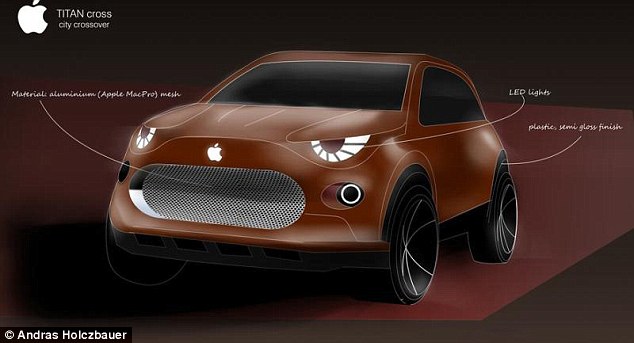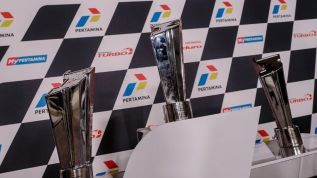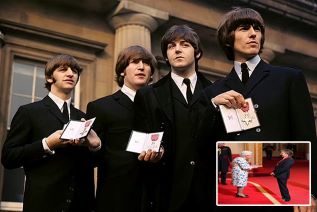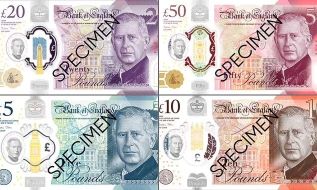Paten di Tangan, Apple Bakal Ramaikan Bisnis Otomotif Masa Depan
Apple IS Developing a Car: First Patent for `Project Titan` Reveals Pedestrian Avoidance System
Editor : Ismail Gani
Translator : Novita Cahyadi

APPLE berhasil mendapatkan paten yang diperkirakan hal itu lebih banyak terkait pada proyek pembuatan mobil masa depan dinamai 'Project Titan' seperti terungkap baru-baru ini.
Dokumen ini menjelaskan tentang teknologi terkait sistem menghindari tabrakan yang dirancang untuk robot, atau mobil tanpa pengemudi (self-driving).
Ini adalah paten publik pertama yang diberikan untuk proyek - meskipun pihak perusahaan pekan lalu mengungkapkan 'minat' pada proyek pemerintah.
Hal ini menyoroti sistem yang mampu menghindari tabrakan dan navigasi melalui daerah tak dikenal dengan menghitung jarak tujuan dan objek terdekat di sepanjang perjalanan.
Paten, diajukan pada 7 Juni 2015, yang berjudul 'Collision Avoidance Of Arbitrary Polygonal Obstacles' dan pertama kali ditemukan oleh Apple Insider, yang mencatat bahwa itu 'menawarkan bukti bahwa perusahaan sedang menyelidiki penerapan pembelajaran mesin dan visi komputer untuk kendaraan tanpa pengemudi'.
Rincian tentang rahasia 'Project Titan' Apple telah beredar sejak tahun lalu dan meskipun perusahaan Cupertino mencoba menyangkal rencana untuk sebuah mobil self-driving, tindakannya berbicara sebaliknya.
Awal bulan ini perusahaan menulis surat lima halaman kepada Badan Nasional Keselamatan Jalan Raya tentang rencana tersebut.
l"Perusahaan melakukan investasi besar-besaran dalam studi mesin dan otomatisasi, dan sangat berminat tentang potensi sistem otomatis di banyak area, termasuk transportasi,' yang ditulis Steve Kenner, direktur integritas produk Apple.
Apple mendesak regulator tidak memaksakan terlalu banyak pembatasan pengujian mobil self-driving, dengan mengatakan 'pendirian perusahaan dan pendatang baru harus diperlakukan sama.'
Sekarang, lebih banyak bukti mengungkap tentang kendaraan produk Apple yang sudah lama dinantikan.
Paten baru menjelaskan teknologi yang bisa menjadi kunci untuk mobil self-driving - sebuah sistem yang dapat beroperasi pada area dua dimensi (2D) dan 3D, sementara sistem komputer sistem kerap dihadang kendala.
Sistem ini digambarkan memiliki memori, display unit dan satu atau lebih prosesor digabungkan ke memori dan unit display dan dikonfigurasi untuk menjalankan kode program yang tersimpan dalam memori mengakibatkan satu atau lebih prosesor,' seperti tertulis pada isi paten.
Hal ini juga menyoroti bahwa teknologi akan mengakses situasi sekitar yang tersimpan dalam memori, mengidentifikasi di mana pengemudi duduk di ruang kemudi dan kemudian menghitung jarak antara benda yang satu dengan benda-benda lain di sekitarnya.
Potensi tabrakan ditentukan dengan membandingkan jarak tepi terhadap radius terdekat yang dikenali.
Pandangan kendaraan dari daerah sekitarnya dapat diperbarui 60 kali per detik, yang memungkinkan untuk mengumpulkan semua benda di jalan sebelum tabrakan terjadi.
Metode ini mengumpulkan informasi tentang hambatan lintas dan jarak antara objek.
Jika teknologi mendeteksi bahwa benda yang berbahaya tidak di berada di jalan, kendaraan akan tetap melaju dalam kecepatan konstan.
Namun jika tabrakan potensial diprediksi, 'sistem memilih vektor tepi terdekat posisi kendaraan dan menghitung gaya yang dibutuhkan untuk menghindari kecelakaan,"seperti dilaporkan Mikey Campbell dengan Apple Insider yang dilansir MailOnline.
Dan ketika objek pertama di jalur kendaraan dihindari, teknologi Hones segera menggunakan data yang dipelajari dari sebelumnya.
Apple tidak pernah mengumumkan secara terbuka rencana proyek otomotif dan jika pada September, The New York Times melaporkan bahwa 'Apple' berniat kembali pada proyek strategi tersebut.
Sumber yang melaporkan meminta tidak disebutkan identitasnya alias anonim karena mereka tidak berwenang untuk membahas proyek tersebut.
Dia mengatakan bahwa Project Titan - nama kode untuk proyek mobil self-driving Apple - sedang mengalami 'reboot'.
Ini berarti bagian penutupan program yang bekerja pada kendaraan bukan fokus pada perangkat lunak untuk kendaraan otonom, sebagai jawaban terhadap paten pada 2015.
APPLE has been awarded a patent that suggests it's much rumoured 'Project Titan' car project is getting closer to being revealed.
The document describes technology for a collision avoidance system that is designed for robots, or self-driving cars.
It is the first public patent granted for the project - although the firm last week revealed its 'interest' in the area in a government filing.
It highlights a system capable of avoiding collisions and navigating through unfamiliar areas by calculating distances and objects with in its radius.
The patent, filed on June 7, 2015, is entitled 'Collision Avoidance Of Arbitrary Polygonal Obstacles' and was first spotted by Apple Insider, which notes that it 'offers proof that the company is investigating the application of machine learning and computer vision to autonomous 'agents' (vehicles)'.
Details about Apple's secretive 'Project Titan' have been floating around since last year and although the Cupertino company has tried to deny its plan for a self-driving car, its actions speak otherwise.
Earlier this month the firm wrote an extensive five-page letter to the National Highway Traffic Safety Administration declaring its interest in the space.
'The company is investing heavily in the study of machine learning and automation, and is excited about the potential of automated systems in many areas, including transportation,' Steve Kenner, Apple's director of product integrity, wrote.
Apple urged regulators not to impose too many restrictions on testing of self-driving cars, saying 'established manufacturers and new entrants should be treated equally.
Now, more evidence has surfaced about the long awaited vehicle.
The new patent describes technology that could be the key to self-driving cars – a system that can operate in both 2D and 3D area, which computer visions systems have had difficulty doing.
The system is described as having a memory, display unit 'and one or more processors coupled to the memory and the display unit and configured to execute program code stored in the memory to cause the one or more processors to,' reads the patent.
It also highlights that the technology would access an environment stored in its memory, identify where the agent sits in this space and then calculate the distance between it and other objects in the environment.
Potential collisions are determined by comparing the edge distance against a known bounding radius.
The vehicle's view of the area around it can be updated 60 times per second, allowing it to gather all of the objects in its path before ramming into them.
This method gathers information about oncoming obstacles and the distance it has between objects.
If the technology detects that the edges of the object are not in its path, the vehicle will keep driving in the same motion.
But if it a potential collision is predicted, 'the system selects the edge vector closest to the vehicle's current position and calculates the force needed to avoid the obstacle,' reports Mikey Campbell with Apple Insider.
And when the first object in the vehicle's path is avoided, the technology hones in on the next one right away using the data it learned from previous one.
Apple has never publicly announced its automotive plans and if September The New York Times reported that 'Apple is 'rethinking' its automotive strategy.
The source spoke on condition of anonymity because they weren't authorized to discuss the project.
He said that project Titan — the code name for Apple's self-driving car project — is undergoing a 'reboot'.
This means closing parts of the program that are working on a vehicle to instead focus on software for an autonomous vehicle, which could be the answer for the 2015 patent.















